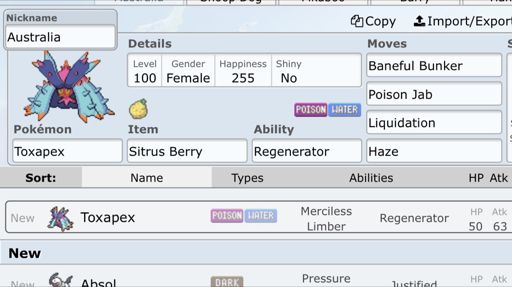

It's best to just keep an open mind when slotting for each role. For example, although Lucario is mainly used as a sweeper, you could use it as a lure with Hidden Power Ice, effectively taking out Gliscor for your main sweeper. It is important to go through this process slowly, as even if a Pokémon isn't generally used in one type of role, you can still find it useful in the future. The most effective way that I've found to create lists is by using the threat list thread to identify all the major Pokémon in each tier, and then sorting them accordingly. Though this seems very tedious, you only have to do it one time per tier, and you can use it for all team building endeavors after. In this example, Dragonite could have been used as either a breaker or sweeper. For example, if you slot a Dragonite as a sweeper, then it shouldn't be used turn two breaking the opponent's team. Each Pokémon can fit into one or multiple roles, so long as they are utilized in the same manner that they were placed. No matter what tier or generation you are in, you will be able to sort each Pokémon into specific roles. The metagame doesn't stay static why should your team building? Creating Rolesīefore we get started with the actual framework creation process, we need to prepare lists for each role. Whether it be from editing a role out or changing the actual formula itself, frameworks are and will forever be changing. Just because I say there should be a pivot in a balance team does not mean it's impossible for a balance team to function without a pivot. However, while I give my current formulas in this article, I want to stress that these aren't set in stone. Everyone has their own way of breaking down their team building process, even if they're oblivious to their own structures. Whenever there is a shift in the metagame, certain roles become more useful than others. In fact, my formulas are always changing. Lastly, I don't claim to hold the best frameworks or formulas for each and every playstyle-not even my acclaimed heavy offense.


It's the phase where you tinker with the EVs or replace a Pokémon that doesn't seem to hold its weight. On the other hand, editing is everything after the initial draft. Our goal, by using formulas, is to get that initial draft as close to the final product as possible. Thus, initial frameworks can be either really good or really bad. A framework is the process I'm labeling the initial draft-nothing more, nothing less. Sometimes, these two phases can be misidentified in the teambuilding process, but they are different. All that you have to remember is that most creativity in team building will take place even before you begin picking Pokémon.Īnother critical point I want to get out of the way is the difference between frameworks and editing. I just want to stress that I said "the starting point," as it's not necessarily your centerpiece. Whether that is a new and creative set or a Pokémon that is never used, the creativity resides in the starting point of your team. First, I argue that the creativity starts with the initial idea. I just want to dispel that myth right away. The biggest complaint that I get from people about frameworks is that it limits creativity. Therefore, you'd have frameworks for offense, balance, stall, etc. My proposal-and what we teach in Battling 101-is that new team builders be given "frameworks" to build their ideas out of. Am I supposed to build around one Pokémon, two Pokémon, or a central idea? Everyone has their own way of building that they've been accustomed to, and for new team builders, all the different ways to build a team clouds the correct path to take. One of the biggest problems new team builders run into is that they don’t know where to start.


 0 kommentar(er)
0 kommentar(er)
